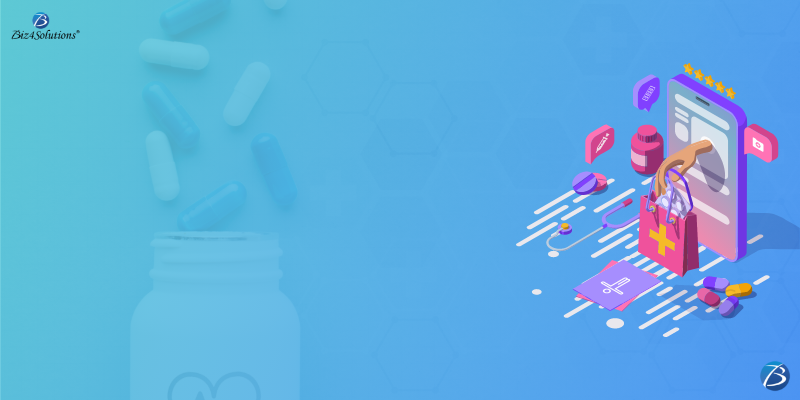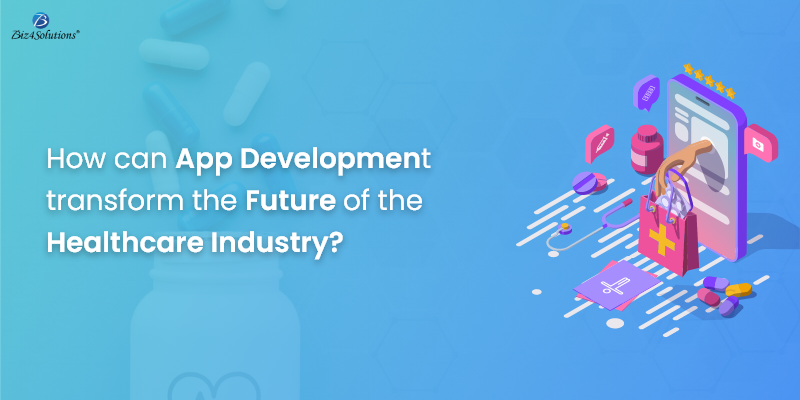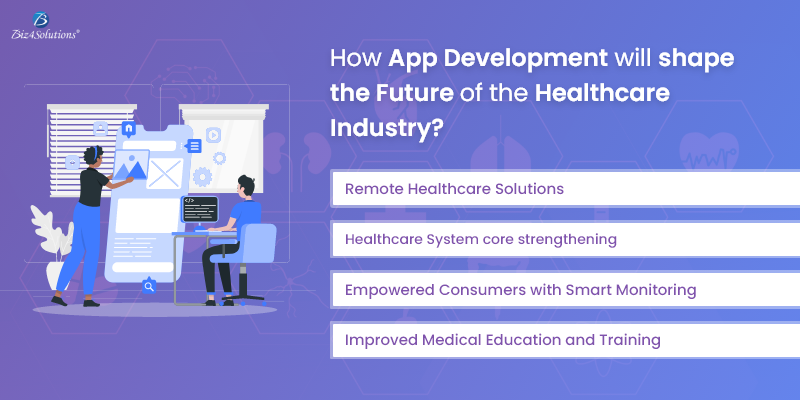The Roadmap to Designing and Developing a Healthcare App
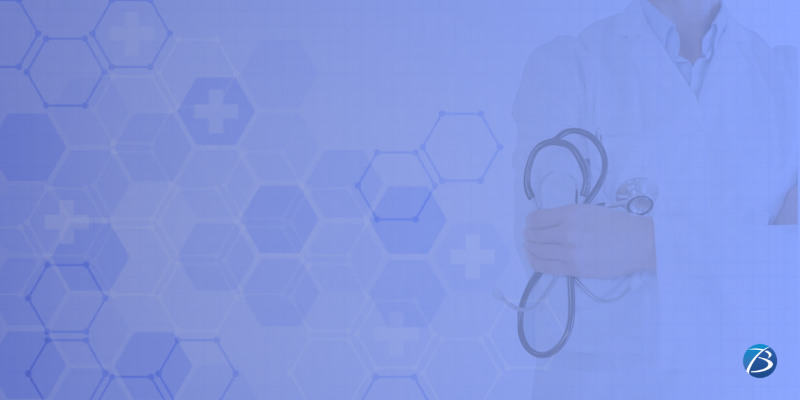
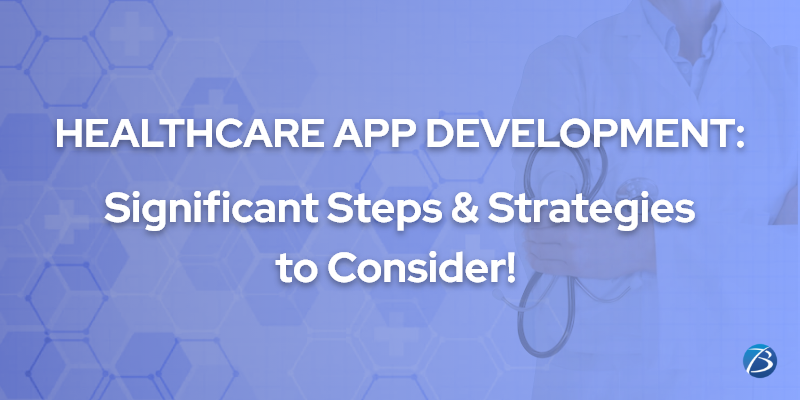
The adoption rate of healthcare mobile apps is growing in leaps and bounds! A healthcare market analysis research report published by the renowned portal Grand View Research states that; “The value of the global mHealth app market was USD 38.2 billion in 2021 and is predicted to rise at a CAGR of 11.8% from 2022 to 2030.”
Needless to say, healthcare app development has become a lucrative investment option. However, crafting a healthcare app is no cakewalk and is associated with challenges, complexities, and high development costs. And, if you don’t want to end up making costly mistakes, you must execute the entire development process flawlessly and adopt the correct approach. This post discusses at length the right strategies required to design and develop a healthcare app. Peek through the key steps of medical app development and understand how to pick the aptest approach and achieve success.
But, before we dive deeper, take a look at the architecture of a mHealth application!
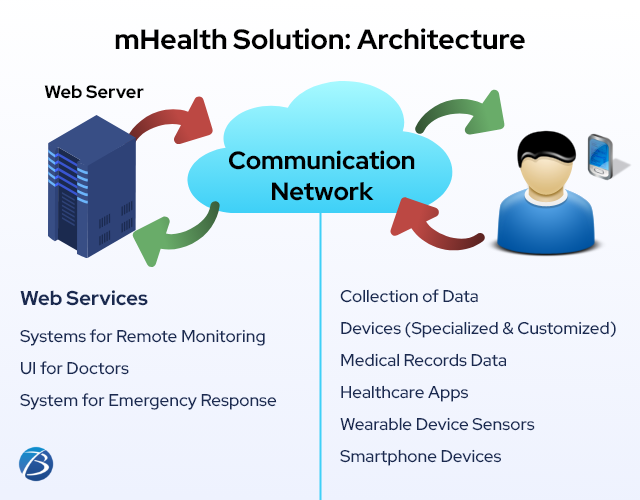
Designing and Developing a Healthcare App: Key Strategies
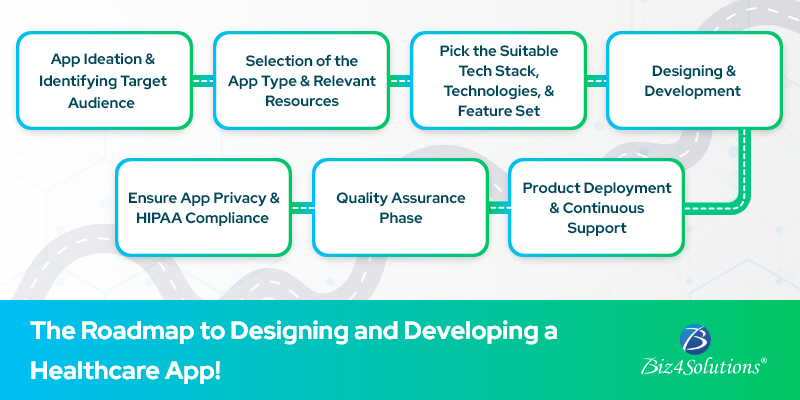
App Ideation
This phase involves three crucial steps. First of all, conduct a thorough market analysis of the healthcare apps available in the market. This will help you to gather industry-specific insights & identify the current trends popular amongst medical app users. Besides, you’ll be able to find out the pain areas existing in the healthcare sector that your app can address.
Thereafter, choose a niche – Who will be your target audience? Also, decide; “What problems will your app solve?”. Lastly, study your competitors to understand their strengths, the value added by their apps, and the areas where they’ve failed to impress. Now, you are in a position to figure out what problem your app can resolve, which approach you should adopt for delivering a flawless solution, and how you can stand out from your competitors.
Identifying the Needs of the Target Audience
Your app will gain recognition if it offers user-driven functionalities. So, the next step is to establish the priorities of your app and set clear objectives. For this, study your target audience groups and identify their requirements and preferences. For achieving this outcome, you can interview your target audience & conduct surveys to dig into the root of the issues faced by healthcare app users. Here, you need to ask your target audience their expectation from a healthcare app, their priorities regarding healthcare consultation, the problems they are facing using existing apps, and so on.
While defining your app objective, you need to pay attention to ease of accessibility and user engagement. You must also consider factors like the location & demographics of your audience. For instance, if your app targets the elderly audience; you can consider larger buttons, fonts, and an easy-going UX flow. If your app caters to kids or young adults, you may consider implementing fun or gaming elements to engage them better. On the contrary, gamification will not be required by apps that are meant for healthcare professionals.
Selection of the App Type & Relevant Resources
App Type
Now, narrow down your objective to the specific type of healthcare application you would like to build. Take a look at the commonest types of medical apps.
- Telehealth & Remote Monitoring applications enable patients to avail of the facility of remote doctor consultation & treatment. These apps involve wearables and can generate & transmit patient data like ECG viewing, lifescan reports, Oxygen-level checks, etc.
- Clinical assistance apps help doctors with medical diagnoses and treatment. Such apps provide EHR & EMR access including capabilities like symptom checking, imaging, and reviewing patient charts & lab results.
- Appointment Scheduling and reminder apps assist admins to schedule appointments online and send automated reminders via push notifications to patients as well as practitioners.
- Fitness & Lifestyle Apps and patient engagement apps assist users in maintaining a healthy lifestyle, tracking their fitness regime, managing chronic conditions, etc.
- Informational Healthcare Apps related to Medical Education & Resources include medical study guides, clinical references, information about drugs & medical research, etc.
Resources
Coding a healthcare app should be flawless. Therefore, you must hire resources that are skilled and possess domain-specific experience. Besides, healthcare app development projects need varied resources like UI/UX designers, front-end developers, back-end developers, project managers, product managers, and so on.
Here, outsourcing the development process to an experienced healthcare development company would be the most viable option. The reason is such firms have the right kind of expertise, can sail through all bottlenecks arising during the development process, and are aware of healthcare app regulatory compliances like HIPAA. Moreover, a sound healthcare development company offers end-to-end healthcare app development services right from the app ideation phase to support during the post-deployment stage.
Deciding on the Devices & Platforms your App will Support
It is important to decide on the suitable operating systems and devices that your healthcare app will support. Here, there are two options. Either build a native app that targets the Android or iOS platform or go for cross-platform app development. The platform selection depends on the platforms your target audience is most likely going to use. The cross-platform strategy works well in maximizing customer outreach; whereas native development outshines in terms of app security. So, the approach you’re going to pick depends on your priority and business objectives.
Coming to devices, support for tablets, mobile phones, and wearables is recommended for a healthcare mobile app. With these devices, users can access your app instantly and fast. On the other hand, desktop devices like laptops & computers are preferred by the older target audience and the individuals involved in medical research or training.
Picking the Suitable Tech Stack, Technologies, & Feature Set
Tech Stack
Pick the right blend of front-end frameworks, back-end frameworks, and programming languages for developing your healthcare app. The commonly used front-end frameworks include React, Vue, Angular, etc.; back-end frameworks are Laravel, Node.js, Ruby on Rails, etc. and mobile app development frameworks are React Native, Flutter, Ionic, etc. Amongst programming languages; Swift, Kotlin, PHP, Node.JS, etc. are the popular ones. You also require IDEs like Android Studio & Xcode; a database such as MongoDB, MySQL, PostgreSQL, Redis, etc.; a cloud storage platform like Amazon S3; and app deployment platforms like Native Android, Native iOS, Cloud, SaaS, etc.
Technologies
Technologies enable you to create the desired functionalities for your medical app. Check out the trending technologies for healthcare app development.
IoT & Wearable Devices: This technology is widely used in the healthcare sector for remote monitoring of body vitals that assist in the management of chronic diseases. IoT-powered Wearables such as smartwatches, smart bands, etc. are used for tracking users’ health parameters like temperature, blood pressure, blood glucose levels, sleep patterns, exercise, diet, and many more. This data is collected by wearables and sent to the practitioners via apps. This way, doctors can monitor patients’ progress and suggest treatment plans without patients having to visit the clinic every time for follow-up visits.
Blockchain: Blockchain technology comes with an immense potential to protect healthcare data from security breaches and improve the accuracy & transparency of medical records. Blockchain solutions decentralize the network that involves healthcare data exchange and transactions between patients, providers, & insurance firms. Such a network registers all transactions and auto-detects any conflicting information or anomaly; making it hack-proof. Here’s an example of how data gets transmitted within a Blockchain network.
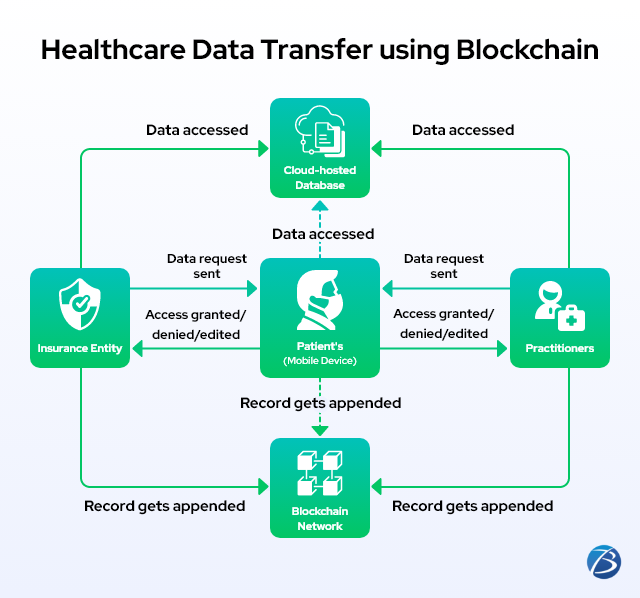
Artificial Intelligence: The commonest forms of AI implementation in the healthcare industry are virtual medical assistance and chatbots. Chatbots serve a wide range of purposes from diagnostic tools to customer service representatives. AI is also leveraged for roles like drug discovery, genomics, healthcare imaging, & precision medicine. Furthermore, AI algorithms work wonders in minimizing the drug development cycle in the pharmaceutical sector.
Machine Learning & Deep Learning: Machine Learning plays a crucial role in cancer detection at the early stages. It can analyse medical images by classifying objects such as lesions and categorizing them into normal & abnormal types. ML-based facial recognition technology in medical apps assists in treating patients suffering from Parkinson’s & Asperger’s disease. ML combined with Deep Learning has led to the creation of the innovative “Computer vision.”
Besides, the aforementioned ones, cutting-edge technologies like AR, VR, & Metaverse are also being considered for healthcare app development. Virtual Reality is being used for treating disorders related to stroke, anxiety, post-traumatic stress, autism in kids, etc. VR simulations are expected to enhance doctors’ skills and guide them in planning complicated surgeries. Metaverse is being considered for surgical simulations, treatments related to rehabilitation, etc.
Feature Set
The feature set of your healthcare mobile app should be decided based on the nature and type of the health app and the purpose it’s going to serve. The key healthcare app features are user login/registration, physician profiles, virtual waiting room, symptom checker, appointment scheduling, reminders/ push notifications, calendar integration, e-prescription generation, prescription tracking, real-time audio/video consultation, patient progress tracking, third-party integration, messaging, geo-location, patient community, cross-platform accessibility, offline mode for certain functions, etc. Features like charting, reporting, & analytics help providers and doctors to carry out their tasks efficiently.
UI/UX Designing
Once the decision-making process is over, it’s time to commence the app design. Remember that the UI/UX design of a healthcare app must be impeccable without any glitches. For achieving this outcome, you must follow the standard practices.
Understand the challenges of medical app usage from the users’ perspective and focus on creating an intuitive and consistent design. Your app should be smooth & guide users to carry out the next step; so that users can proceed to the endpoint effortlessly without much ado. Your app’s graphic design should be user-friendly and clean; with fewer “interaction points.” Users should be able to access all important screens with a few clicks. So, avoid an app design that requires users to navigate between multiple unnecessary screens.
It is also a good idea to customize your app design as per the requirements of specific audience groups. For example, an app that caters to users with hearing impairments should display captions while the patient is taking a call with the practitioner. Apps meant for people with motion sickness should contain minimalistic animations. Features like voice input or the option of converting interactions from speech to text are advisable in apps catering to patients with body aches.
Create content that provides information about the app. It will help users to seamlessly interact with the app. Aspects like labels of menus & buttons, terms & conditions of usage, instructions, and error messages are essential inclusions while UX writing. It’s advisable to provide crucial information during the initial stages of the users’ journey itself and minimize the cognitive load as much as you can.
App Prototyping
App prototyping is an important step during the designing phase. It refers to creating an early version of the envisioned product. It is used for validating whether the features planned will work as desired. You create an app prototype by including the features as clickable screens that look almost similar to the real product. An app prototype can work like an actual app on smartphone screens. So, it is handy for A/B testing purposes on users’ screens. You can also verify whether all the app functionalities get along with the platform you’ve selected. There are several prototyping tools available in the market like Draftium, Marvel, InVision, Adobe XD, Axure, Origami, Atomic, Sketch, etc.
Development
Now comes the crucial step – the actual development process. The best tried and tested approach recommended for this phase is an agile development methodology. This strategy involves breaking down the development process into smaller sprints. Small-sized sprints enable you to continuously deliver and test. The testing of the previous sprint and the development of the next sprint can go on simultaneously without interfering with each other. The agile approach also allows you to oversee the entire scope and figure out the adjustments needed in the upcoming sprints.
Healthcare apps need to be made interoperable with the already existing systems like EHR & EMR, various healthcare devices, and apps in the medical facility to facilitate seamless data exchange between them. Apps are made to interact with these devices & systems through APIs.
Implementing Security Measures & HIPAA Compliance
Privacy and security play a vital role in healthcare apps as these apps handle sensitive patient data. And, medical apps are highly vulnerable to cyber-security threats. So, app creators must pay special attention to adopting the right security measures and adhering to regulatory compliances. Governments around the world have mandated stringent laws & regulations to protect the privacy of patient data. For instance, all healthcare apps in the US that handle PHI need to be HIPAA (Health Insurance Portability & Accountability Act) compliant, apps in the European Union need to follow GDPR (General Data Protection Regulations), and medical apps in Canada need to adhere to PIPEDA (Personal Information Protection and Electronic Documents Act).
Therefore, once your app is developed you need to implement security measures. Some of the commonest security practices are installing & enabling end-to-end encryption on smartphone devices, limiting access, and implementing authentication methods like strong user passwords, multi-factor authentication, etc. to prevent unauthorized access and cyber-attacks. Also, update your app periodically to eliminate network infections that threaten to compromise healthcare app data and follow an app expiration policy (the app automatically expires after a pre-defined period).
Also, check the privacy policies and specific requirements for healthcare mobile apps defined by Apple’s App Store and Google’s Play Store.
Quality Assurance Phase
The testing and debugging process starts during the developmental stage itself as every issue has to be identified and fixed at once. You must also conduct quality assurance testing to do away will all blind spots and optimize the app’s performance.
Product Deployment & Maintenance
Your healthcare app is now ready for deployment to the App Store (iOS) or Play Store (Android), or both (if the app targets both iOS and Android). While deployment, you need to take care that the policies of the respective stores are not violated.
After release, the app still needs continuous monitoring and support as bugs and technical issues can crop up anytime. You must also roll out regular updates & add the necessary features to stay relevant to current trends.
Concluding Lines:
I hope the information conveyed through this post has helped you to understand the nitty-gritty of healthcare app development and the best practices & strategies to follow while designing healthcare apps. In a nutshell, your healthcare mobile app needs to deliver accurate outcomes and ensure military-grade security while dealing with sensitive patient data. If you fail to provide accuracy and data safety, you are in trouble and may get involved in legal repercussions.
Hence, remember to pick the right kind of resources that can handle healthcare app development complexities, requirements, third-party integrations, regulatory compliances, etc. Healthcare app developers with extensive experience, expertise, and innovative skills are necessary in this regard. Also, do not forget to make your app HIPAA compliant and adopt additional security practices as well.

